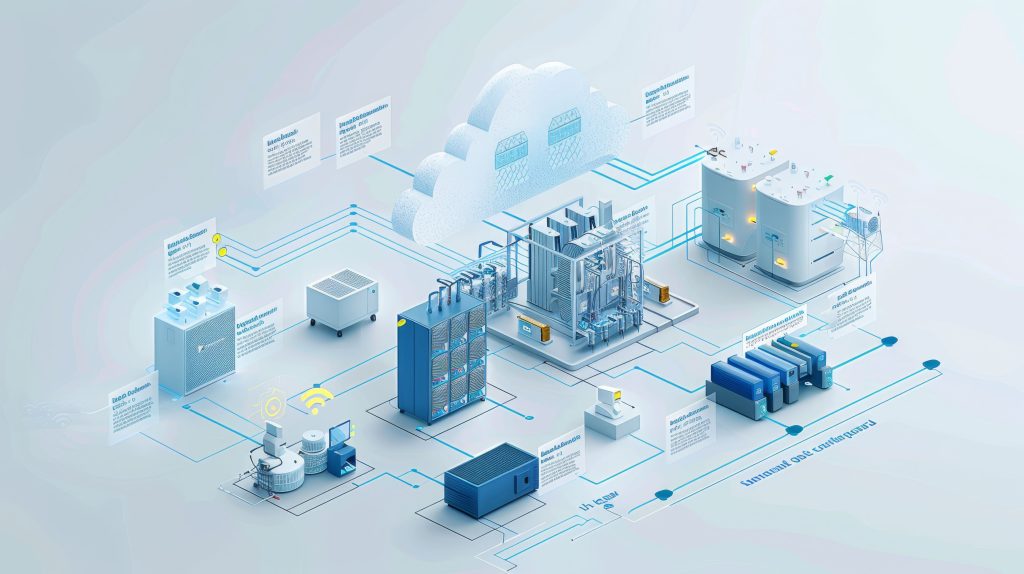Cost-Efficient IT Strategies for Small to Medium-Sized Enterprises

Small and medium-sized enterprises (SMEs) are important for innovation and jobs. But what usually happens is that effective information technology (IT) infrastructure seems to be out of their league. Limited resources are to blame. Here’s the good news, though: it doesn’t need to be expensive. Any business can harness information technology strategies for growth and competitiveness regardless of their budget.
Still not sold on the fact that a business can maximize its technological output while keeping costs low? Hang on. We’ll look into some of the basics below so you can ensure agile and efficient IT infrastructure—from embracing the cloud to refurbishing older hardware.
Managed IT Services
With managed IT services, SMEs are able to outsource specific IT tasks or their entire IT infrastructure to a third-party provider. Sounds like a smart strategy, right? This means they don’t need to hire and maintain a full in-house IT team. Managed service providers (MSPs) offer solutions ranging from help desk support to cybersecurity and infrastructure management. This partnership gives SMEs access to a team of experienced IT professionals without the associated salary and benefits costs.
Additionally, they can also get cyber security as a service, which includes next-generation virus protection, ransomware detection, and penetration testing. To further streamline IT operations, many SMEs turn to a top rated MSP staffing company to ensure they have skilled professionals managing their technology needs without the burden of in-house hiring. This can be particularly beneficial for smaller businesses that may not have the resources to build an extensive IT department.
This partnership gives SMEs access to a team of experienced IT professionals without the associated salary and benefits costs. Additionally, businesses that require technical expertise without expanding their in-house teams can benefit from software team augmentation, ensuring they have the right talent for specialized projects without the overhead costs. Beyond that, they can also get cyber security as a service, which includes next-generation virus protection, ransomware detection, and penetration testing. This can be particularly beneficial for smaller businesses that may not have the resources to build an extensive IT department.
But hear this one out: choosing an MSP carefully and establishing clear expectations are of the utmost essence. Don’t be like those businesses that feel a loss of control over their IT operations when outsourcing. So, communicate regularly with your MSP and establish key performance indicators (KPIs) to measure their effectiveness.
Open-Source Software
Open-source software (OSS) provides an attractive alternative to expensive proprietary software. Most of them are free, which means one can use, distribute, and even modify them when the need arises. For all these reasons, they become quite attractive for SMEs.
Besides, the open-source community behind these tools both maintains and develops them fanatically to make sure they work and are secure.
Also, many of the business applications in use have their free and open-source counterparts. For instance, LibreOffice provides a full office suite, and GIMP presents a lively image processing instrument in the manner of Adobe Photoshop. WordPress is also a free, open-source, content management system used to build professional-looking websites even without great spending on licenses.
Most organizations already use OSS, indicating how valuable of an investment they are.
Cloud Computing

Cloud computing has revolutionized the way businesses manage their IT needs. No relying on expensive on-premise servers and software anymore. Instead, cloud services offer a flexible, pay-as-you-go model, so SMEs can freely scale their resources up or down based on demand. No more large upfront IT investments!
One of the major perks of cloud computing is cost-effectiveness, all thanks to shared resources and infrastructure. Thus, cloud providers can offer services at a fraction of the cost of traditional IT setups. SMEs can gain significant savings through this.
The cost-effectiveness, scalability, and flexibility of cloud computing have seen corporates store over 60% of their data in the cloud. This is a significant change from 30% in 2015.
Hardware Optimization
In the current technology landscape, hardware can quickly become outdated. However, with proper maintenance and strategic upgrades, SMEs can extend the lifespan of their existing devices and delay costly replacements.
Regular cleaning, updating drivers and firmware, and replacing failing components can significantly improve the performance and longevity of computers, servers, and other hardware. Additionally, older devices can often be repurposed for less demanding tasks, such as running a file server or acting as a thin client terminal.
Thin client computing can be one of the most cost-effective Information technology strategies for SMEs. Thin clients are low-powered devices that rely on a central server to perform most processing tasks.
Proactive Cybersecurity
Taking into account all businesses, one of the prime concerns surviving at all scales is cybersecurity. However, SMEs are more prone to risks due to their resources. Thankfully, proactive cybersecurity measures could be cost-effective and help business owners avoid huge financial losses in case of data breaches. Moreover, regular cloud security testing is vital, enabling businesses to identify and address vulnerabilities before malicious actors can exploit them, ensuring robust defense against threats and safeguarding sensitive data.
Staff training is one of the best practices towards IT security. Training staff on how to identify and avoid phishing or malware scams can send risk levels plummeting, while strong passwords and two-factor authentication offer another layer of protection that won’t break the bank.
Conclusion
These cost-effective information technology strategies harness the power of technology effectively without causing a dent in your wallet. And what would ultimately make all the difference is the strategic adoption of such solutions so SMEs can lay the right IT foundation. The result? Resounding growth and success!
